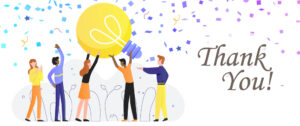Dual language learners—children who are learning two or more languages at the same time or learning a second language while continuing to develop their first language—make up 27% of children under 5 years old (U.S. Department of Health and Human Services, 2017). As these numbers continue to grow, clinicians will no doubt see more dual language learners in their caseloads, many for whom formal assessment tools are unavailable.
In the American Journal of Speech-Language Pathology (AJSLP), Guest Editors Li Sheng and Mark Guiberson have planned a two-part forum of interest to clinicians treating this growing population. The forum is titled “Forum on Innovations in Clinical Practice for Dual Language Learners.” In Part 1, three articles explore unique problems, and all aim to inform clinical practice. Sheng (2019) writes the following:
Together, these three articles provided a promising alternative to the intractable problem of multilingual assessment, a map of potential interventions for the earliest stage of dual language development, and an evidence base of intervention strategies that awaits further scrutiny for DMLs (p. 930).
In her introduction to the forum, Sheng explores the history of forums on dual language learners in the ASHA Journals and adds her insight to the three articles in Part 1 of the forum. In the first article, Ebert and Pham (2019) tackle the lack of language assessment tools for speech-language pathologists (SLPs) working with dual language learners who speak a language unfamiliar to the SLP. In this article, the authors attempt to pinpoint nonlinguistic tasks that an SLP could use when assessing an unfamiliar language. Next, Guiberson and Ferris (2019) conducted a review of 70 language interventions for dual language learners found in the literature and graded each from “compelling” to “lacking.” In the third article, Crowe and Guiberson (2019) focus on interventions for dual-language learners who are deaf and hard of hearing.
We’d like to thank Drs. Sheng and Guiberson for their forum on this important topic for AJSLP. Read Part 1 of the forum here, or explore the individual articles below. We look forward to the publication of Part 2 of the Forum on Innovations in Clinical Practice for Dual Language Learners in the summer of 2020.
References
Sheng, L. (2019). Introduction to the forum: Innovations in clinical practice for dual language learners, Part 1. American Journal of Speech-Language Pathology, 28, 929–931. https://doi.org/10.1044/2019_AJSLP-IDLL-19-0143
U.S. Department of Health and Human Services. (2017). Policy statement on supporting the development of children who are dual language learners in early childhood programs. Washington, DC: Author. Retrieved from https://www.acf.hhs.gov/sites/default/files/ecd/dll_policy_statement_final.pdf
Explore This Forum
Crowe, K., & Guiberson, M. (2019). Evidence-based interventions for learners who are deaf and/or multilingual: A systematic quality review. American Journal of Speech-Language Pathology, 28, 964–983. https://doi.org/10.1044/2019_AJSLP-IDLL-19-0003
Ebert, K. D., & Pham, G. T. (2019). Including nonlinguistic processing tasks in the identification of developmental language disorder. American Journal of Speech-Language Pathology, 28, 932–944. https://doi.org/10.1044/2019_AJSLP-IDLL-18-0208
Guiberson, M., & Ferris, K. P. (2019). Early language interventions for young dual language learners: A scoping review. American Journal of Speech-Language Pathology, 28, 945–963. https://doi.org/10.1044/2019_AJSLP-IDLL-18-0251
Sheng, L. (2019). Introduction to the forum: Innovations in clinical practice for dual language learners, Part 1. American Journal of Speech-Language Pathology, 28, 929–931. https://doi.org/10.1044/2019_AJSLP-IDLL-19-0143







